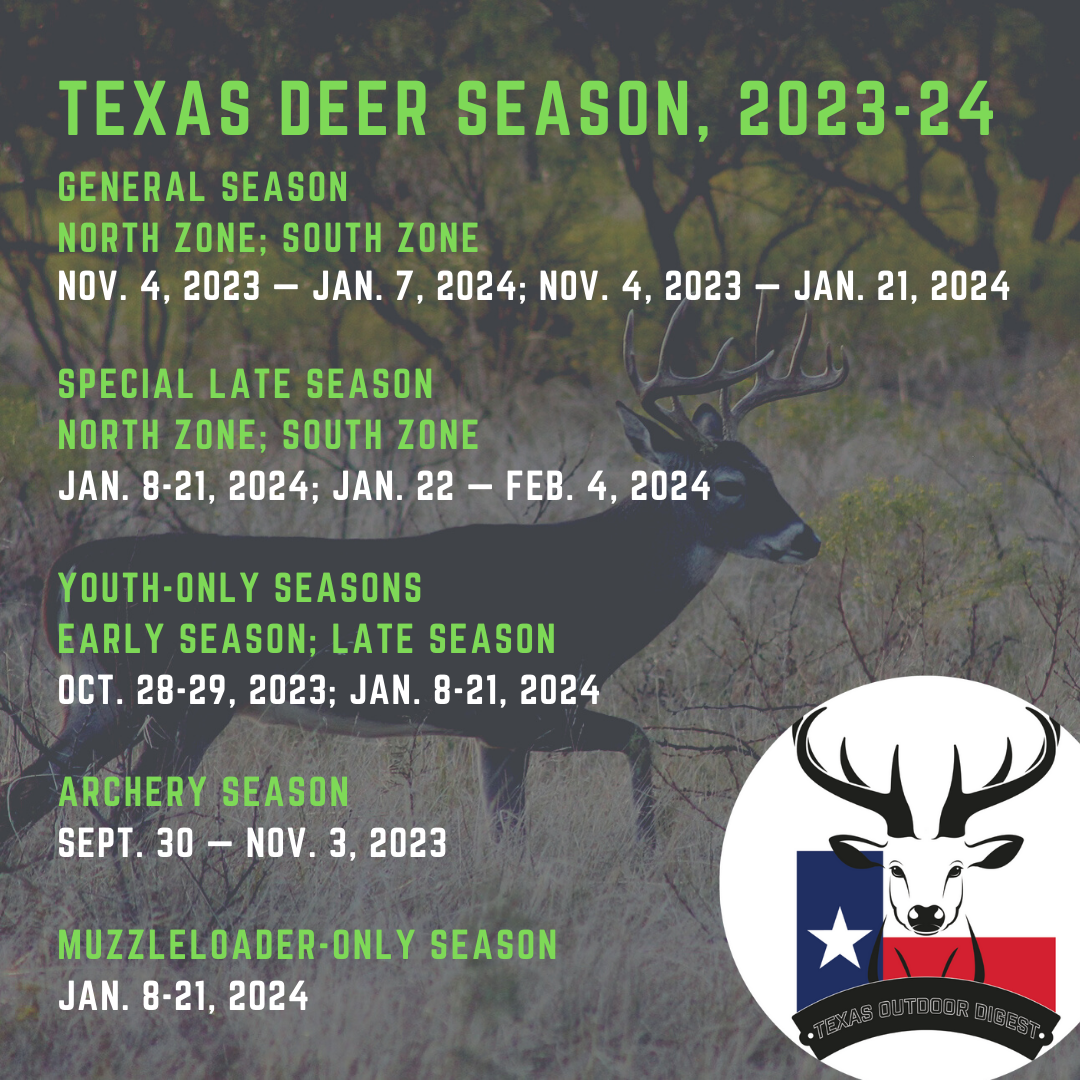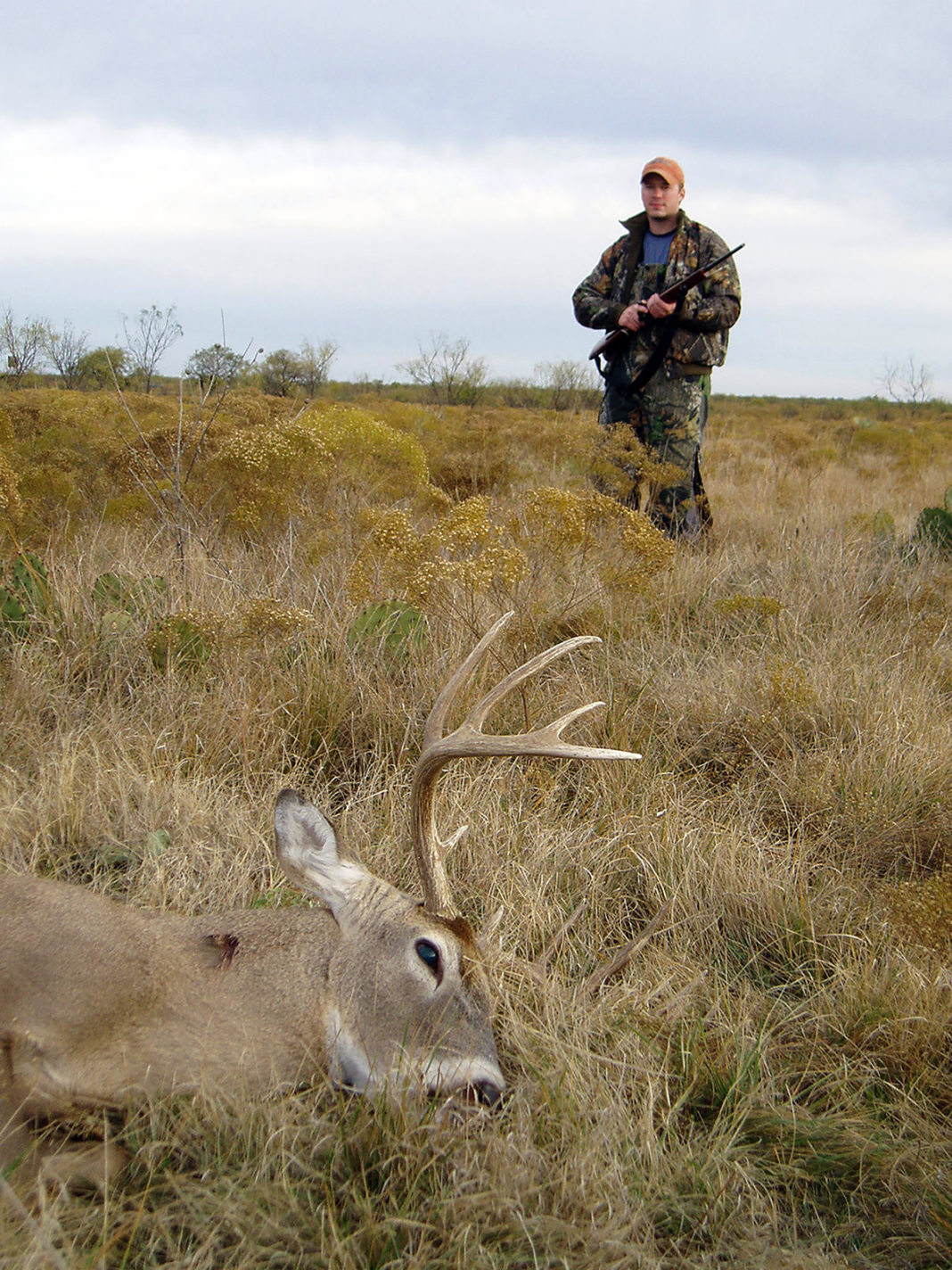
Deer hunting in Texas is more than just a barrage of camouflage.
For many folks — hundreds of thousands of us here in the Lone Star State alone — deer hunting is life, and from Amarillo to Brownsville north to south and Texarkana to El Paso east to west, it’s easy to see why.
Deer hunting is big business.
Deer hunting is time-honored tradition.
Deer hunting is simply family time unlike any other.
It’s also a three-month season that most of us average hunters — and again, there are hundreds of thousands of us — look forward to the instant we leave the lease for the last time in January, closing the book on more invaluable memories as we close that ranch gate.
Make no mistake, deer-hunting success is based on multiple criteria centering on your own personal preferences.
Perhaps you only count achievement in regards to the number of tags you fill or the weight of how much organic venison you put in the freezer.
Maybe you only hunt for the antlers or for taking only mature bucks.
No matter the inclination, there is no wrong answer in determining success in the deer woods.
And if you’re like most hunters, deer hunting is mainly an excuse to spend time outdoors, joining others in the shared search of our state’s big-game animal.
So what does deer hunting really mean to Texas?
Beyond the emotions and motivations associated with enjoying the hunt, which can vary and be hard to adequately assess based on subjectivity, you only have to look at the numbers to learn just how significant the impact is objectively. That’s especially true at the local level. Places like Sonora, Junction and Mason are just a few of the dozens of small towns across the state that welcome nonresidents of their communities with open arms, throwing wild game dinners and hunter appreciation events complete with barbecue, all the trimmings and plenty of prize giveaways.
Local business owners revel in seeing GameGuard, Realtree and Mossy Oak from head to toe, lifted pickups towing gear-laden trailers and all those hunters who bring along their wallets beginning with lease preparations in September through February when everything must be secured and packed away.
It’s a fact that those dollars flowing into those communities can make the entire year for small shops, especially those hit hard the past couple of years by the pandemic.
The most recent economic impact survey from the U.S. Fish & Wildlife Service on outdoor recreation sheds light on just how much money we’re talking about. That survey showed more than 1 million residents and nonresidents 16 and older bought hunting licenses in Texas — a figure that has continued to hold steady at seven figures for years.
Annual deer-hunter participation and harvest surveys conducted annually by Texas Parks & Wildlife show that in good seasons roughly 750,000 of those more than a million hunters are pursuing deer, harvesting more than a half-million bucks and does from a statewide herd that numbers in excess of 5 million.
That’s a lot of folks digging into their bank accounts to collect bone and backstraps, a true economic driver of the first order.
While the federal survey includes a host of numbers, the overall impact of hunting in Texas is clear: hunting-related expenditures add up to more than $1.8 billion, with a healthy chunk of those funds going directly toward deer-hunting trips, gear, food and lodging, among other purchases. According to studies from the International Association of Fish and Wildlife Agencies, that funding has a multiplier effect of double those expenditures, providing revenue across multiple business interests, while a study compiled for Texas Parks & Wildlife by an outside agency showed a total economic effect multiplier of nearly three.
Just think about how many pallets of bagged corn changes hands over the course of the year — and that’s just one small aspect of the pastime — and you can somewhat envision the wide-ranging scope of deer hunting.
All that funding has a trickle-down effect, helping to pump hundreds of millions of dollars into our local state economy each fall and winter. While that dollar amount includes valuable funds headed to outfitters, mom-and-pop shops and those making a direct living off the hunting industry, the federal taxes generated by the overall industry end up going back into state coffers earmarked for needed resource protections and improvements.
In that aspect, hunting is conservation, with a direct correlation to improving habitat and in some cases access and opportunities.
The U.S. Fish & Wildlife Service annually distributes revenue to each state’s wildlife agency through the Pittman-Robertson Wildlife Restoration program, with funds coming from excise taxes on the sale of everything from sporting firearms and ammunition to archery equipment.
That figure in 2023 coming back to the Lone Star State was nearly $55 million for wildlife restoration efforts — the highest figure in the country. Pittman-Robertson funds allow the Texas Parks & Wildlife Department’s Wildlife Division to offer many services, including technical guidance to private landowners who control roughly 95% of wildlife habitat in Texas, TPWD surveys and research for development of hunting regulations, operation and management of Wildlife Management Areas and conducting research and developing techniques for managing wildlife populations and wildlife habitat.
Hunters also play a vital role in that deer management at the statewide level, which also means a lot, too. Those hundreds of thousands of hunters are the main mechanism by which TPWD influences overall deer numbers, buck-to-doe ratios and various herd genetics, while helping to increase or reduce populations based on selective harvest.
The clear example of this conservation role and management framework is the antler restriction move implemented in a half-dozen Post Oak region counties in the late 1990s. They were designed to improve the age structure of buck herds, increase the opportunity to harvest those bucks and encourage better habitat management. For the most part, that framework has been wildly successful and the restrictions are now in place in dozens more counties in the Post Oak, Pineywoods and northern coastal prairie regions.
While it’s easy to quantify the economic and management impacts of what deer hunting means to Texas, it’s just as simple to see numerous other ways hunters contribute. In many regards, deer hunting also is about giving back, whether it’s hunting organizations and local clubs offering community fundraising events and field days that get families into the outdoors — something that’s vital to our hunting heritage — or providing high-quality, lean meat for the state’s Hunters for the Hungry program.
Texas Parks & Wildlife deer biologists will offer the suggestion that you manage your particular tract as if a lingering drought remained — even in times of good rain — and to keep populations in check through selective harvest, an ideal that transcends land size, fence height or geographic region. Should you find yourself with extra venison that won’t fit in your already stacked freezer, by all means help out by donating your extra harvest to state-inspected meat processors that will grind it up for a nominal fee and give it to food pantries that desperately need the sustenance.
At the end of the day, Alan Cain, the current big game program director and former deer program leader for the Texas Parks & Wildlife Department, may have still provided the best answers on quantity and quality when it comes to both deer hunting and enjoying the outdoor pursuit in general.
“Regardless of where you hunt in Texas there’s always a good chance you’ll see a great quality buck each season,” he has noted. “Whether you take a deer or not, spending time outdoors with your family and friends is worth the effort, much better than spending a day at the office or a weekend on the couch.
“Hunters ought to feel lucky that we live in Texas with the largest deer herd in the nation. Our biggest problem is that we probably don’t harvest enough deer, which is good that hunters have the opportunities that they do to harvest deer.”
Texas long has had the greatest whitetail hunting in the country, not just for folks who can afford to spend the big bucks in their attempts to harvest the big bucks, but also for the average hunter who still enjoys hunting as much as possible but may not necessarily get to head afield as much as they’d like.
It’s always a perfect year to get back to the basics of deer hunting — mainly the opportunity to spend time outdoors during a splendid time of year while providing for your family should you enjoy success.
Make sure you’re included in that group for this upcoming year’s counts and also make sure to spend some of your hunting dollars in the local communities you frequent on your excursions.
We’re all better because of your deer-hunting efforts!
2023-24 Texas Deer Seasons
General Season
North Zone; South Zone
Nov. 4, 2023 — Jan. 7, 2024; Nov. 4, 2023 — Jan. 21, 2024
Special Late Season
North Zone; South Zone
Jan. 8-21, 2024; Jan. 22 — Feb. 4, 2024
Youth-Only Seasons
Early Season; Late Season
Oct. 28-29, 2023; Jan. 8-21, 2024
Archery Season
Sept. 30 — Nov. 3, 2023
Muzzleloader-Only Season
Jan. 8-21, 2024
How to correctly size up deer, antelope during Texas hunting seasons
Texas hunting accident deaths center on improper handling of firearms


















